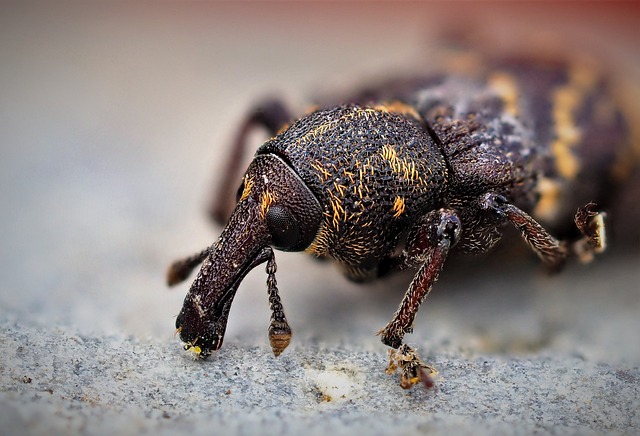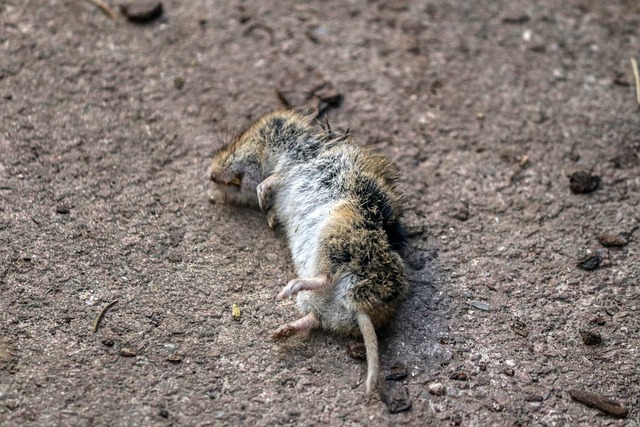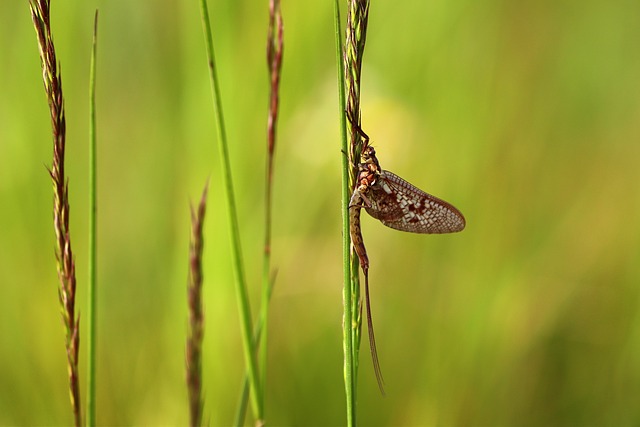In Tucson, Arizona, effective pest control requires strategies tailored to the city's arid climate and rich ecosystem. Residents face a variety of pests including ants, cockroaches, spiders, rodents, and scorpions, with the Argentine ant and varieties like the American and German cockroach being particularly problematic in Tucson's warm environment. Biological control agents, such as ladybugs and lacewings, are used by Tucson Pest Control experts to naturally manage pests through predation, while targeted pathogens like entomopathogenic fungi and bacteria provide a controlled microbial solution to keep pest numbers in check. Additionally, sustainable practices involving herbs that repel or attract beneficial insects are part of the integrated pest management (IPM) approach, which also includes cultural practices and mechanical methods to minimize reliance on chemical treatments. This holistic strategy not only protects the local flora and fauna but also ensures public health safety in Tucson's unique desert environment.
explore the benefits of natural pest control tailored for Tucson’s unique environment, delving into effective strategies that align with the region’s biodiversity and climate. This article provides a comprehensive guide to understanding and managing common pests through sustainable practices, highlighting the use of biological control agents, plant-based solutions, and cultural and mechanical techniques. By integrating these methods, Tucson residents can maintain healthy homes and gardens without relying heavily on chemical-based products. Embracing natural pest control not only protects local ecosystems but also contributes to a safer environment for both humans and wildlife. Learn how to effectively implement these methods for a pest-free Tucson living space.
- Understanding Tucson's Pest Ecosystem: An Overview of Common Pests and Their Behaviors
- Biological Control Agents: Utilizing Predators and Pathogens to Manage Pest Populations
- Plant-Based Solutions: Employing Herbal Deterrents and Attractants for Natural Pest Repellency
- Cultural and Mechanical Techniques: Strategies for Preventing and Controlling Pests in Tucson Homes and Gardens
Understanding Tucson's Pest Ecosystem: An Overview of Common Pests and Their Behaviors

In the Sonoran Desert surrounding Tucson, Arizona, residents encounter a diverse array of pests throughout the year. A comprehensive understanding of Tucson’s pest ecosystem is crucial for effective pest control measures. Common household pests in Tucson include ants, cockroaches, spiders, rodents, and scorpions. These organisms adapt to the arid conditions, seeking moisture and shelter within homes. Ants, particularly the aggressive Argentine variety, are prevalent, foraging for food and water. Cockroaches, such as the American and German species, thrive in warm, humid environments and can become a significant issue if not managed promptly.
Spiders, including the brown recluse and black widow, often find their way into homes to escape the harsh desert sun. Rodents like rats and mice seek out food sources and comfortable nesting areas. Scorpions, with species like the Arizona bark scorpion being particularly common, hunt for prey at night. Understanding the behavior patterns of these pests is essential for Tucson pest control strategies. For instance, sealing entry points, maintaining clean environments, and employing strategic landscaping can deter many pests. Additionally, using eco-friendly and targeted treatments, as offered by professional Tucson pest control services, can effectively manage infestations without posing risks to humans or pets. Recognizing the specific challenges of Tucson’s climate and pest dynamics is key to safeguarding homes and health.
Biological Control Agents: Utilizing Predators and Pathogens to Manage Pest Populations

In Tucson, where the diverse and often arid landscape provides a unique environment for both flora and fauna, pest management presents a challenge that requires innovative solutions. Natural pest control methods, particularly those involving biological control agents, are not only effective but also environmentally sound. These agents include predators and pathogens that can manage pest populations without the use of synthetic chemicals. Predators such as ladybugs, lacewings, and spiders are instrumental in controlling aphids, caterpillars, and other insect pests endemic to Tucson’s ecosystem. By introducing or conserving these natural predators, local gardens and farms can maintain pest levels below those that would cause economic injury. Similarly, pathogens that target specific pests, like the entomopathogenic fungi and bacteria, can be introduced in a controlled manner to keep pest populations in check. These microbial agents work by infecting the pest organisms, ultimately leading to their demise without affecting non-target organisms or the environment. Tucson Pest Control experts who advocate for these biological approaches underscore the importance of understanding the local ecosystem to effectively implement such strategies. This knowledge ensures that the delicate balance of native species is preserved while effectively managing pests. The use of predators and pathogens in Tucson Pest Control not only reduces the reliance on harmful chemicals but also contributes to the conservation of natural biodiversity, making it a sustainable option for residents looking to protect their homes and gardens from unwanted insects.
Plant-Based Solutions: Employing Herbal Deterrents and Attractants for Natural Pest Repellency

When it comes to effective pest control in Tucson’s diverse environments, residents can turn to a variety of plant-based solutions that harness the natural deterrent and attractant properties of certain herbs. These eco-friendly alternatives not only help maintain the ecological balance but also provide a safer option for both the community and the local wildlife. For instance, plants like mint, basil, and chives can be strategically placed around the home to naturally repel pests such as mosquitoes, ants, and flies. Their strong scents are often unpleasant or even toxic to pests, deterring them from infesting homes. On the contrary, certain herbs like dill, fennel, and carrot tops can attract beneficial insects like ladybugs and lacewings, which prey on common garden pests like aphids and caterpillars. By fostering an environment that supports these natural predators, Tucson residents can effectively control pest populations without the need for harsh chemicals. This approach not only complements the local ecosystem but also aligns with the principles of integrated pest management (IPM), a sustainable and responsible method for pest control. Implementing plant-based solutions in Tucson pest control regimens is a testament to the community’s commitment to preserving the region’s natural beauty while ensuring the safety and well-being of its residents.
Cultural and Mechanical Techniques: Strategies for Preventing and Controlling Pests in Tucson Homes and Gardens

In Tucson, a desert city with a unique climate and diverse ecosystems, pest control requires a blend of cultural and mechanical techniques tailored to the local environment. Homeowners in Tucson can employ cultural practices that are deeply rooted in the community’s understanding of natural pest management. These include maintaining cleanliness both indoors and out, removing food sources and water that attract pests, and encouraging beneficial insects that prey on common garden pests like aphids and beetles. Regular garden maintenance to keep plant debris and weeds at bay also plays a crucial role in deterring pests. Additionally, Tucson’s residents can utilize mechanical techniques such as physical barriers to protect plants from chewing pests or row covers to shield crops from direct contact with insects. Mechanical pest control methods include the use of traps and handpicking invasive species like fire ants or palmer amaranth, which are known for their resilience and spread in the region. Employing these techniques not only aligns with Tucson’s commitment to environmental stewardship but also ensures a more sustainable approach to pest control that minimizes reliance on chemical treatments. Integrated Pest Management (IPM) strategies, which combine these cultural and mechanical methods, are highly effective in managing pests in both residential homes and gardens across Tucson. This holistic and proactive approach not only protects the health of residents but also preserves the natural beauty and biodiversity that characterizes this unique Sonoran Desert landscape.
Residents of Tucson can effectively manage their pest challenges by adopting natural pest control methods that align with the region’s unique ecosystem. By understanding the local pest dynamics and implementing a combination of biological control agents, plant-based solutions, and cultural and mechanical techniques, homeowners and gardeners can create a more harmonious environment. These sustainable practices not only protect biodiversity but also reduce the reliance on chemical pesticides, making Tucson a safer place for all. Embracing these natural pest control strategies is a commendable step towards preserving the integrity of Tucson’s diverse habitats and ensuring the well-being of its residents, contributing positively to the broader goal of ecological conservation within the community.
